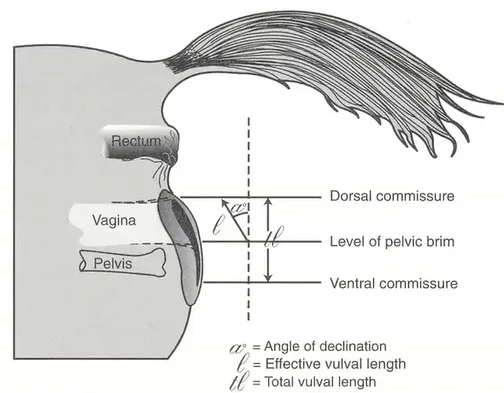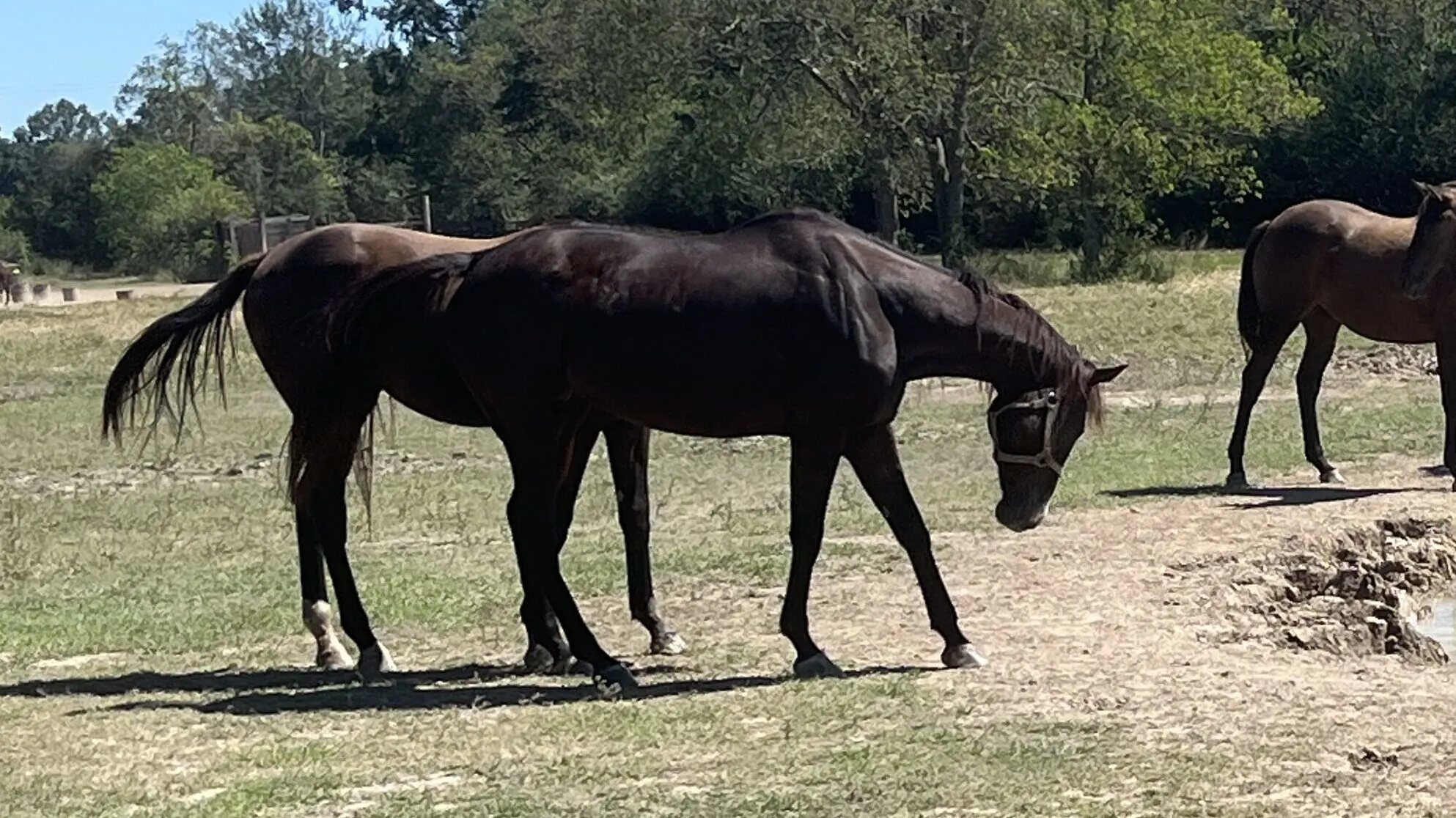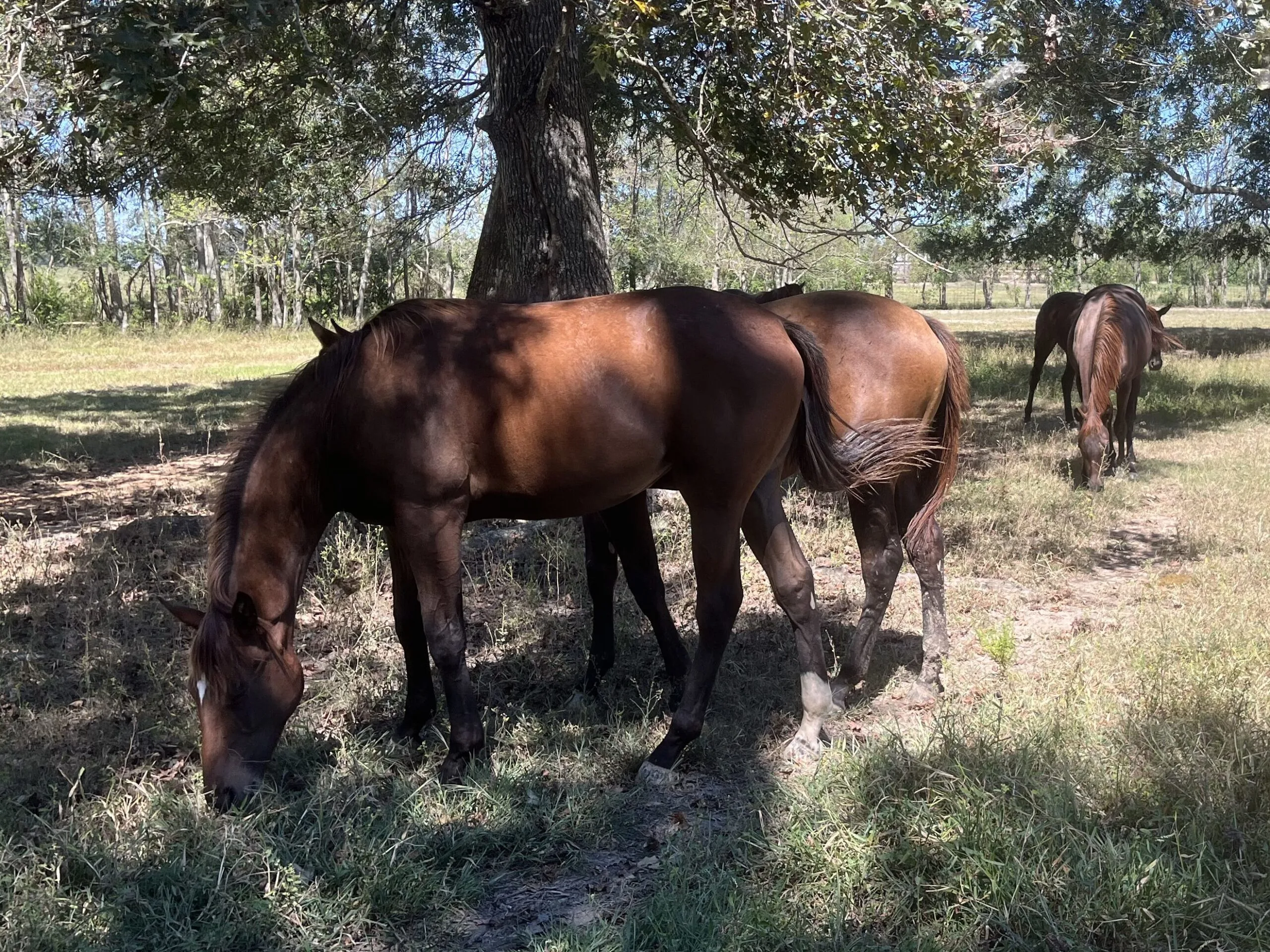Last updated: March 21, 2023
Any links on this page that lead to products on Amazon are affiliate links and I earn a commission if you make a purchase. Thanks in advance – I really appreciate it!
Have you ever wondered what the funny noises your mare makes from behind when working or galloping are? Why she gets so many vaginal infections and discharges? Then the likelihood is that she is wind-sucking or aspirating air into her vagina.
Wind sucking is a condition that affects mares and is known as pneumovagina. The vulva lips are the first defense for the reproductive tract protection from external debris that could cause infections. When the vulva fails to seal properly, a caslick procedure is necessary to rectify the issue.
It’s not as uncommon as we would like to hear; wind sucking in mares can affect many different breeds, and this can affect the mare’s performance as well as be the reason for infertility or the inability to carry a pregnancy to term. So what exactly is wind-sucking, and what can we do about it?

What is wind sucking in mares?
Wind-sucking in mares and fillies is a condition that is only visible in the female gender, where the air gets sucked into the vagina due to the vulva lips not sealing the entrance of the vagina properly.
The condition can affect any breed, with some mares only being affected by wind sucking occasionally while others suffer chronically from this condition. We had a barrel-racing mare that sucked wind any time she jogged and another that only did it at a full run.
The technical term for this condition is pneumovagina.
Usually, wind-sucking will be evident at high speeds or under extra exertion. The suction of air enters the vaginal canal due to the changes in intra-abdominal pressures during exercise, causing ballooning of the vagina.
I found this condition to be very common in racing mares and fillies. However, it can also be a result of:
- Poor vulva conformation
- Vaginal injury and trauma from multiple foaling or mating
- Poor body condition and muscle tone
- Advanced aging
- Weight issues
- External trauma or injury to the vulvar
- Bad conformation, e.g., Flat croup, high tail head, sunken anus
Note: Horse owners may use the term wind-sucking to describe cribbing, which is a chronic condition where horses draw air into their mouths and make noises. This is unrelated to wind sucking we are discussing.
What causes mares to wind suck?
Poor Vulva Conformation
An ideal vulva angle is 80% to the perpendicular line. Mares with vulvas angled less than 50% are at risk of wind-sucking.
Typical vulva lips have a good tone and create a good seal which is the first barrier against external contaminants that may enter the vagina, irritating the lining and leading to uterine infections that can affect the establishment of pregnancies and the survival of the fetus.
Vaginal Injuries
Vaginal injuries from previous pregnancies can reduce the sealing ability of the vulva, leaving a small gap between the lips making air easy to enter the vagina under exertion, or allowing debris from feces to get sucked into the vagina.
Multiple foaling can also cause pneumovagina; in layperson’s terms, it means everything is no longer as tight as it used to be.
Lack Of Muscle Tone
Poor muscle tone due to neglect or sickness can also create weak vulvas; this also applies to aging mares.
Weight Issues
You may find that the pressure inside the vagina of overweight mares pushes the labia (outside lips of the vagina), causing the lips to become inverted, reducing the vulva seal.
External Trauma Or Injury To The Vulvar
An acute injury to the vaginal area may cause weakening of the muscle walls that prevent the sealing of the vulva lips.
Bad Conformation

What Is A Caslick Procedure In Horses?
A poor body conformation of the croup or genital area can affect the angle of the vulva. For example, an open anus can also pull the vaginal opening deeper under the tail, reducing the angle and forcing the lips open.
A caslick procedure in horses is a treatment for mares that have a wind sucking condition. It is a simple procedure where a vet sutures the vulva lips of the mare, closing about two-thirds of the vulva or the outer part of the vagina to prevent air from getting sucked in but still allowing the mare or filly to urinate normally.
The procedure is done under local anesthetic, cutting a small section of tissue on both sides of the vulva to allow the flesh to bind together and close the opening leaving a small gap for the mares to pass urine.
A caslick can be temporarily reversed if you want to breed the mare at a later stage.
Why do mares get caslicks?
There are several reasons why mares should get a caslick procedure.
- To prevent infections
- It interferes with their under saddle performance
- To counteract ascending infections that prevent the establishment and survival of pregnancies.
It is vital to perform a caslick procedure on mares to prevent infections. This is because the opening of the vulva allows dirt or fecal debris to enter and get sucked into the vagina, causing contagions and irritations that lead to urinary tract infections.
Wind sucking can cause irritation and discomfort to the horse as it balloons the vagina; this conflicts with the movement and performance of the horse when ridden, causing the mare to stop or refuse the rider’s requests to prevent any further pain.
Breeding mares should have a caslick procedure to avoid the possibility of infection causing infertility due to endometritis, preventing them from getting pregnant or being unable to hold onto the pregnancy full term.
Mares are at risk of aborting a pregnancy if left with a pneumovagina; wind-sucking allows debris to enter the vagina, causing endometritis or placentitis, a bacterial infection of the reproductive tract.
Most racing and performance mares I’ve owned have had to have a caslicks procedure.

When should caslicks be removed?
Mares that have caslicks cannot be bred naturally to a stallion. You can, however, artificially inseminate a mare through a speculum below the caslick. If the mare is to be naturally mated with a stallion, the caslick needs to be reversed and the vulva re-opened to prevent tearing while mating.
After successful mating, the caslick should be closed again to prevent wind-sucking debris from aspirating into the vagina, potentially fatal to the growing embryo.
Pregnant mares must have the caslick removed about one to two weeks before foaling to prevent ripping the partially closed vulva when the foal is born. Sometimes we remove caslicks when we turn a mare out during the racing offseason.
Below is a YouTube video livestream that discusses how a mare tolerated caslick surgery.
Can you breed a mare with a caslick?
Just because your mare needs a caslick or you buy a filly from the track with a caslick does not mean that she cannot be used for breeding.
If you decide to breed, a vet can reverse the process by cutting on the surgical line to open the vulva. However, mares that have, or need caslick procedures, will always need to be sutured again after breeding or foaling.
Of course, breeding with a mare that requires a caslick needs careful consideration, as each time she breeds, she will have to be cut open and sutured up at least twice, once for mating and once for foaling. In contrast, artificial insemination requires that she be opened only once when foaling.
There is a finite number of times that a caslick procedure can be performed as each time increases the fibrotic or scarring tissue of the vulva, making it more difficult to make clean incisions and suture the opening.
So considering the breeding career of the mare is essential as she will not be a seasonal breeder, and there are the possibilities of passing on any vulva conformation defects to her filly.

Conclusion
Wind sucking or air aspiration into the vagina is more common than we think and can affect any female breed of horse from young to old due to specific physical issues. Caslicks are often the solution to this issue and require a vet to suture up to two-thirds of the mare’s vulva.
References
- https://www.haughtonanimalhospital.com/portals/328/Articles/Equine/WindSucking.pdf
- https://en.wikivet.net/Pneumovagina_-_Horses
- https://www.merckvetmanual.com/management-and-nutrition/management-of-reproduction-horses/breeding-soundness-examination-of-the-mare?query=pneumovagina%20mares
- https://horsesidevetguide.com/drv/Observation/617/noise-from-mares-hind-end-during-movement-wind-sucking/
- https://www.vetlexicon.com/treat/equis/diseases/vagina-pneumovagina
- https://www.sciencedirect.com/science/article/abs/pii/S0737080611000918
- https://www.researchgate.net/publication/251594710_Why_Are_Mares_with_Pneumovagina_Susceptible_to_Bacterial_Endometritis_A_Personal_Opinion
- https://www.vetlexicon.com/treat/equis/diseases/uterus-endometritis-bacterial
- https://www.bloodhorse.com/horse-racing/articles/145289/caslicks-operation-problem-barrier
- https://www.aqha.com/-/caslick-101
- https://canberraequinehospital.com.au/wp-content/uploads/2015/06/The-Expectant-Mare-and-Foaling-2016.pdf
